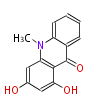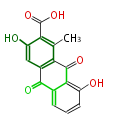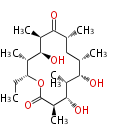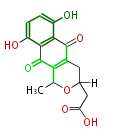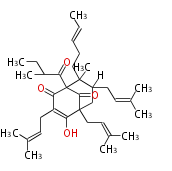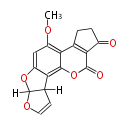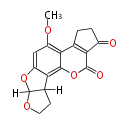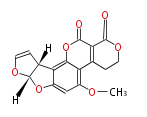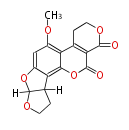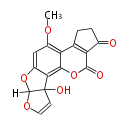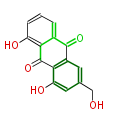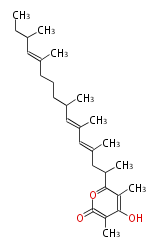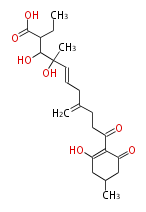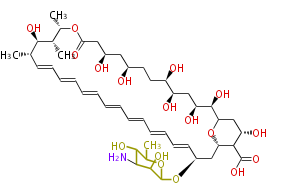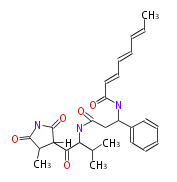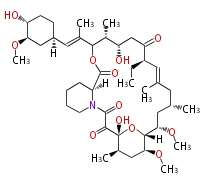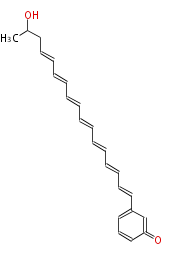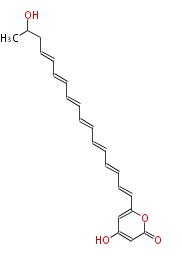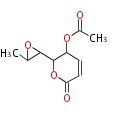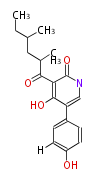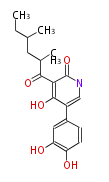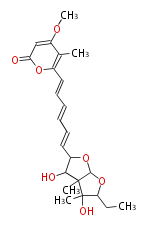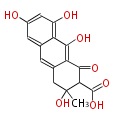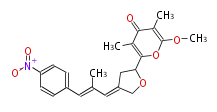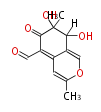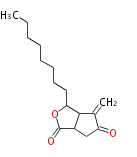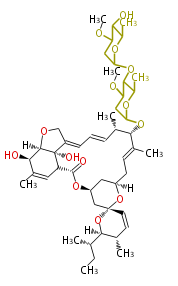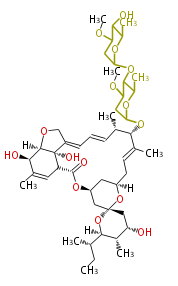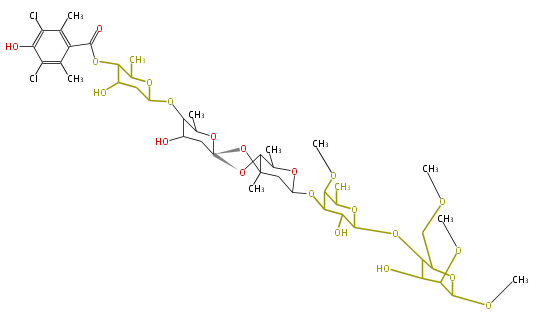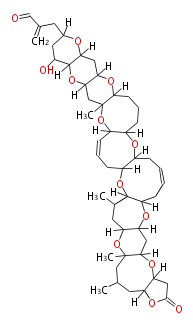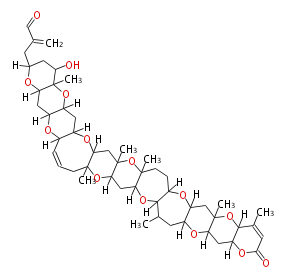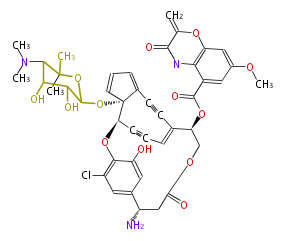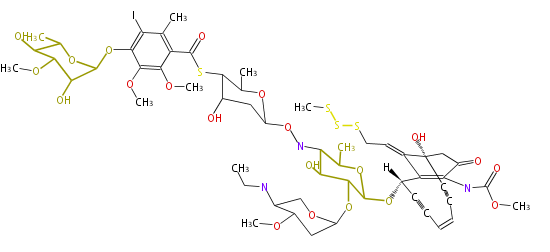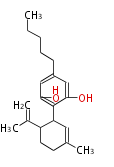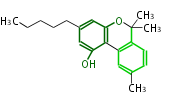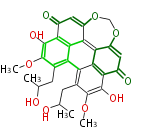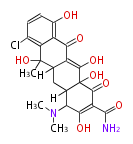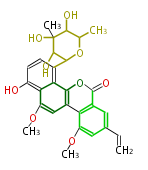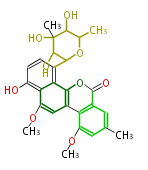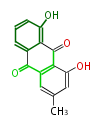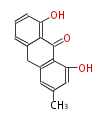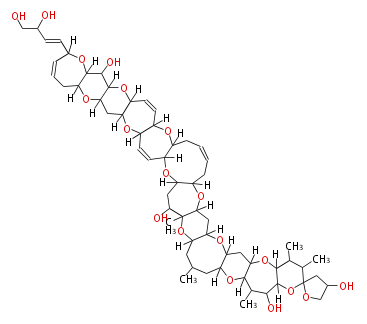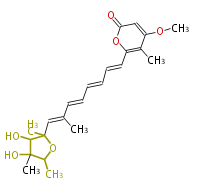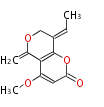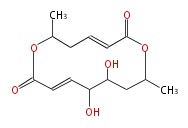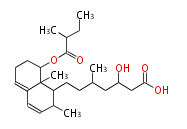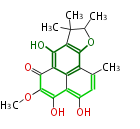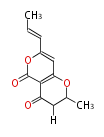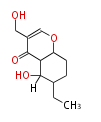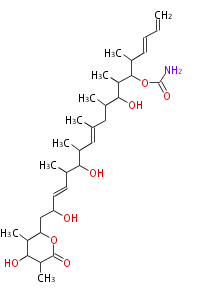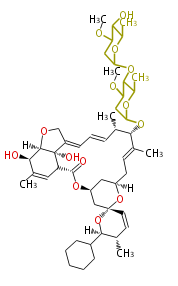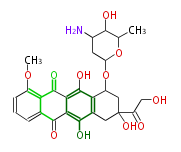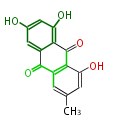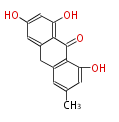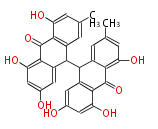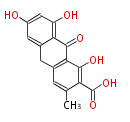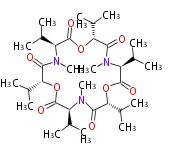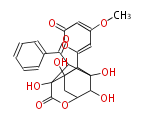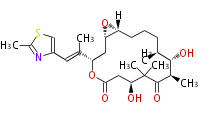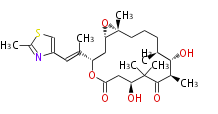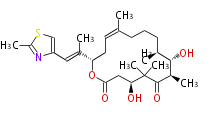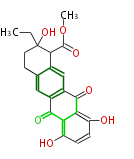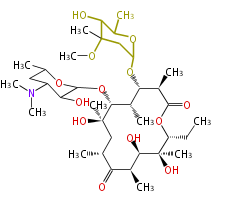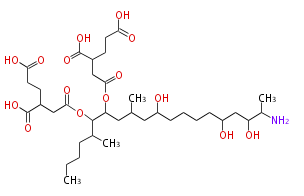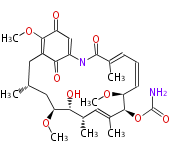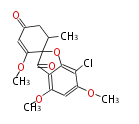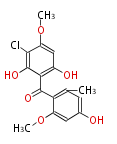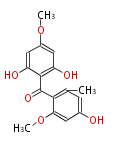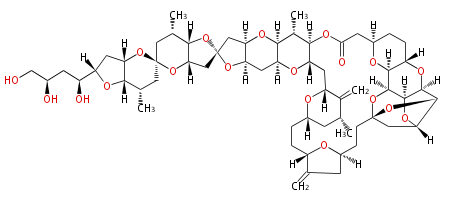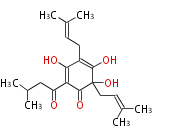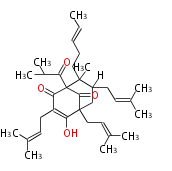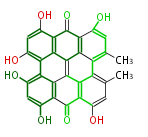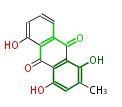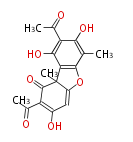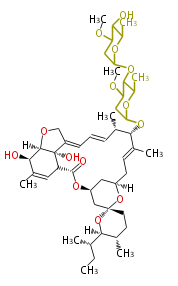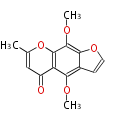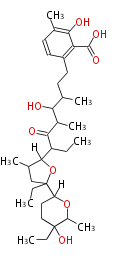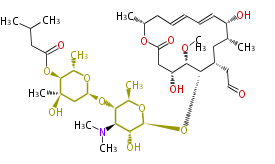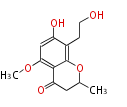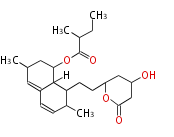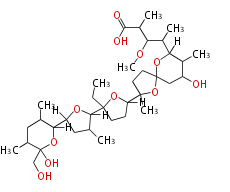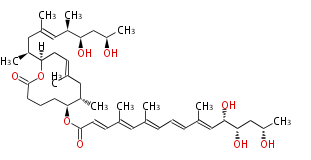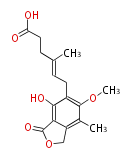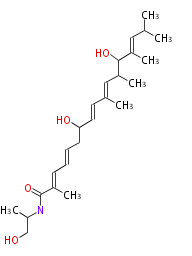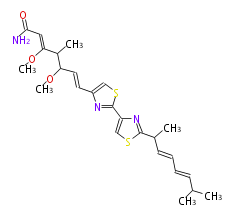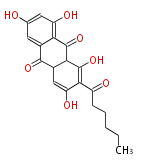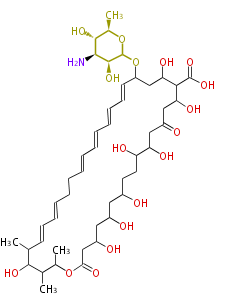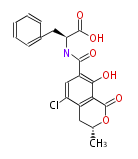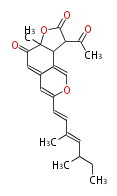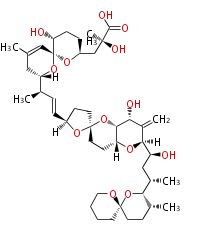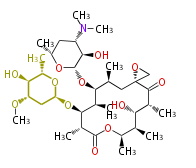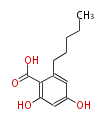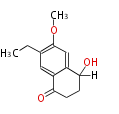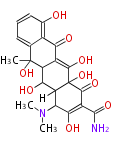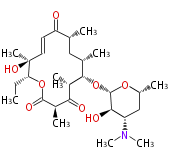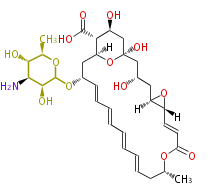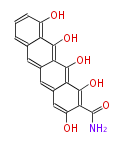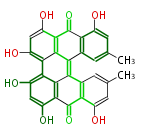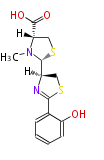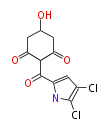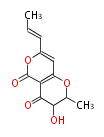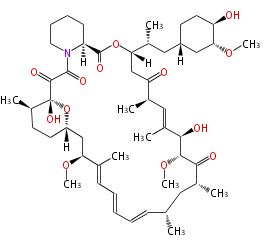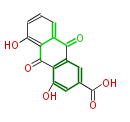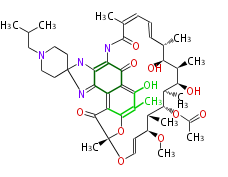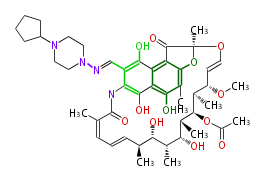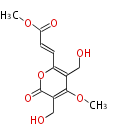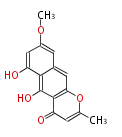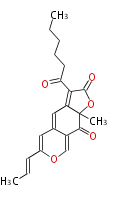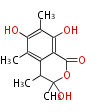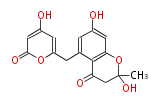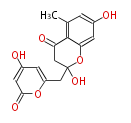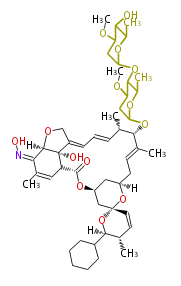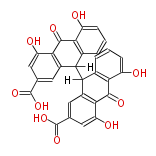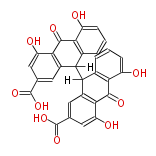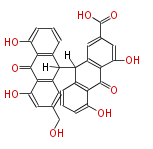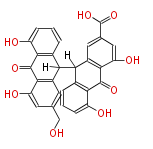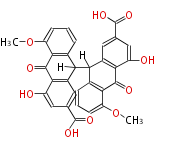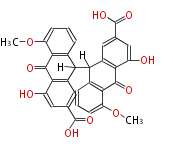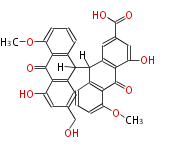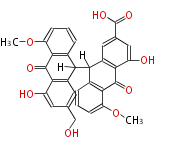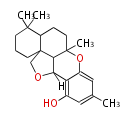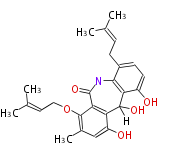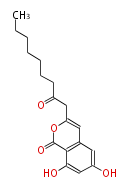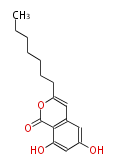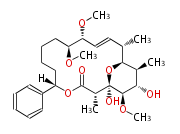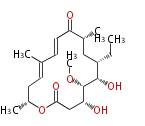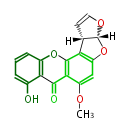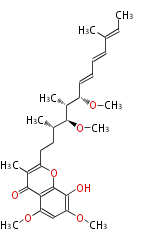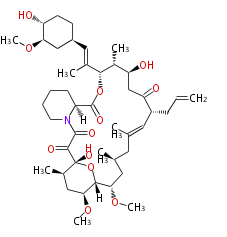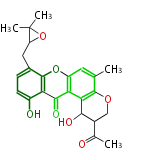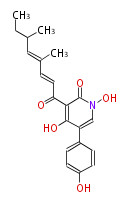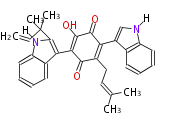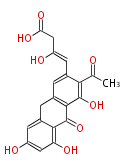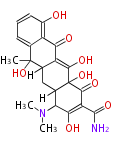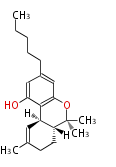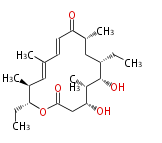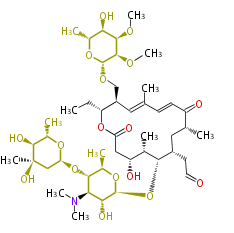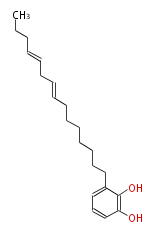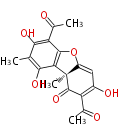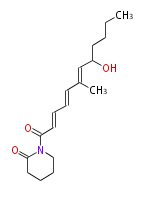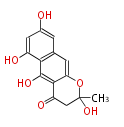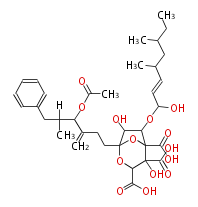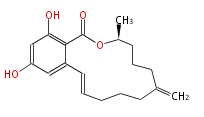Polyketide (ポリケチド)
Class Overview
Polyketides are synthesized through the polymerization of acetyl units (β-ketomethylene) as in fatty acid biosynthesis. Typical starter units are short-chain fatty acids (e.g. acetyl-CoA or propionyl-CoA), on to which extender units (e.g. malonyl-CoA or methylmalonyl-CoA) are repeatedly polymerized.
The key reactions for the chain extension are:
- Claisen condensation by β-ketoacyl synthase (KS)
- an acyltransferase (AT), and
- an acyl carrier protein (ACP).
After elongation, β-ketone is reduced. In fatty acid biosynthesis, the chain is fully reduced by the following three steps:
- Reduction to an alcohol by ketoreductase (KR),
- Dehydration to the conjugated ester by dehydratase (DH), and
- Reduction of the double bond by enoyl reductase (ER).
In polyketide synthase, the reduction is patial.
Finally, the chain is terminated by a thioesterase (
TE) activity and
allows Claisen cyclization (
CYC).
Table 1. Polyketide Classification
| 1st Class
|
PK4: Four C2 Units
orsellinic acid, 6-methylsalicylic acid, triacetic acid lactone, asperlin, usnic acid, methylphloracetophenone, penicillic acid, patulin
|
PK5: Five C2 Units
citrinin, aflatoxin, augenone, sepedonin, stipitatonic acid
|
PK6: Six C2 Units
plumbagin, 7-methyljuglone, juglone, variotin
|
PK7: Seven and eight C2 Units
Anthraquinone rings
griseofulvin, rubrofusarin, emodin, alizarin, pachybasin, xanthone, versicolorin A, aflatoxin B1, sterigmatocystin, tajixanthone
|
PK9: Nine C2 Units
Tetracyclines
terramycin, aureomycin, daunomycin
|
|
|
| Linear Chain and Related ()
|
|
|
| Polyether (LE)
|
| nigericin
|
| monensin
|
| okadaic acid
|
| ciguatoxin, brevetoxin
|
| halichondrin
|
| zaragozic acid
|
|
Acetogenins (LA)
|
|
| Aromatic and Diels-Alder Related (most often by iterative type II)
|
| Monocyclic (A1)
|
| Salicylic acid
|
| orsellinic acid
|
| benzophenone
|
| altenariol
|
|
| Bicyclic (A2)
|
| lovastatin
|
aflatoxinsCite error: Invalid <ref> tag;
refs with no name must have content
|
|
| Tricyclic (A3)
|
| emodin
|
| sennoside
|
| hypericin
|
|
| Tetracyclic (A4)
|
| Linear type
|
| Angucycline
|
|
| Macrolides (most often by non-iterative type I)
|
| Polyene (MN)
|
| Manumycin
|
| Nystatin
|
| Amphotericin
|
|
| Cyclic Imines (MI)
|
| Spirolide
|
| Pinnatoxin
|
|
| Ansamacrolide (MA)
|
| Rifamycin
|
| Ansamycin
|
|
| Polyether (ME)
|
| Nonactin, Nactin
|
|
|
|
| 14-membered (M4)
|
| Colletodiol
|
| Erythromycin[1]
|
| Fluvirucin
|
| Zearalenone
|
|
| 16-membered (M6)
|
| Avermectin
|
| Bafilomycin
|
| Oligomycin
|
| Tylosin
|
|
| More (MM)
|
| Bryostatin (26)Cite error: Closing </ref> missing for <ref> tag
|
| Milbemycin (20)
|
| Myxovirescin (28)[2]
|
| Natamycin (26)[3]
|
| Tacrolimus (23)
|
|
Polyketide Synthase (PKS)
| species |
Actinomycetes |
Cyanobacteria |
γ-Proteobacteria |
Fungi |
Dinoflagellates
|
| Type-I PKS
|
Ο |
Ο |
Ο |
Χ |
Ο
|
| Type-II PKS
|
Ο |
Χ |
Χ |
Ο |
Χ
|
| NRPS
|
Ο |
Ο |
Ο |
Ο |
Χ
|
| deoxysugar
|
Ο |
Χ |
Χ |
Χ |
Χ
|
| Terpene
|
Δ |
Χ |
Χ |
Ο |
Χ
|
Type I PKS (non-iterative)
- Multi catalytic domains exist in a single protein
- Chain length is determined by the number of catalytic domains.
- Products are non-aromatic and have larger masses.
Ref. Erythromycin biosynthesis in Nat Prod Rep 18, 380 (2001)
Type II PKS (iterative)
- Three proteins (KSα, KSβ, ACP) are repeatedly used for carbon chain elongation.
- Chain length is determined by another protein, CLF.
- In bacteria, products are aromatic (e.g. chiorotetracycline, pradimicin).
- In fungi, products are both non-aromatic and aromatic.
Non-ribosomal peptide synthase (NRPS)
Coupling with PKS and NRPS
- vancomycin ()
- leinamycin (Curr opin chem biol 7:285, 2003)
- pseurotin (chem bio chem 8:1736-1743, 2007)
- curacin (curr opin chem biol 13:216, 2009)
- epothilone
- rapamycin
PKS in Fungi
- both aromatic and non-aromatic compounds are generated by iterative PKS
- methyl branch is transferred from methionine, not methylmalonyl CoA
Ref. Dewick, PM Medicinal Natural Products (2009)
Decoration
deoxysugars
deoxygenation, c-methylation, amination, n-methylation, ketosugar,
Unusual structures
| Phoma
|
zaragozic acid, phomoidoride
|
Streptomyces
|
yatakemycin, leinamycin, saframycin, neocarzinostatin, staurosporin, FR182877
|
Other bacteria
|
PKS-NRPS hybrid type
Curacin A (Lyngbya), Shiphonazole (Herpetosiphon), Jamaicamide A (Lyngbya), Cylindrospermopsin (Cylindrospermopsis)
|
Cite error: <ref> tags exist, but no <references/> tag was found
Subcategories
This category has only the following subcategory.

